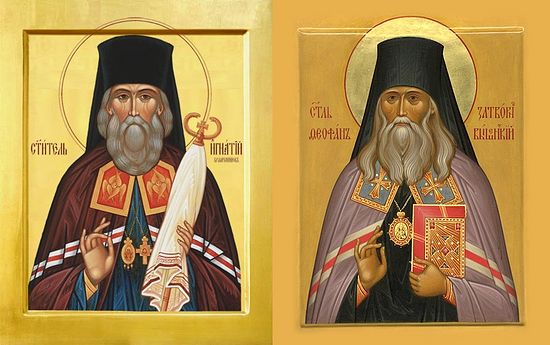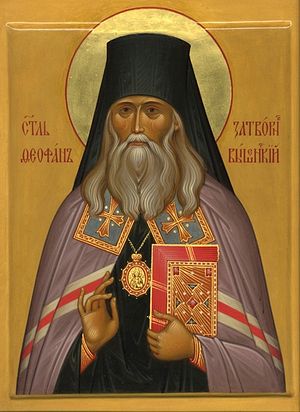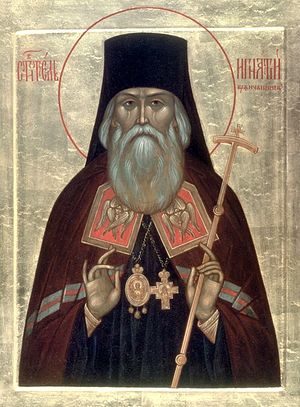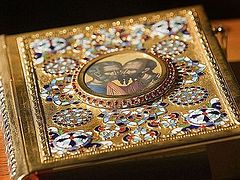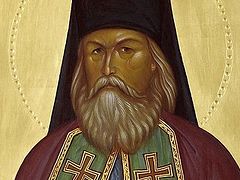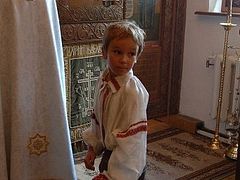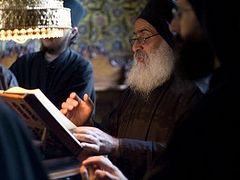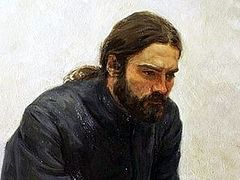Our preferences… Well, how can we get by without them? They apply both to the everyday side of life, and to the most exalted side—the religious. In recent years you hear all the more often that St. Ignatius (Brianchaninov) is more preferable for Orthodox than St. Theophan the Recluse. There are degrees to this preference. The most radical: They basically ignore St. Theophan, but declare St. Ignatius as a “necessary and sufficient” spokesman for the entire Patristic Tradition. A more moderate version gives St. Ignatius the status of teacher, but to St. Theophan—student. From here they conclude: Having the work of the teacher before us, we should turn to the works of the student only on those issues not unveiled by the teacher.
Of course, the juxtaposition of these two Russian saints has specific historical reasons. As is known, these two saints crossed paths in their lives. In 1844, the young Hieromonk Theophan showed Archimandrite Ignatius, as the more experienced of the two, his course lectures, and received a positive review from him. About twenty years later, there was another episode: the debate between the two holy hierarchs about the nature of the human soul and of angels. From this episode, some people interpret the teaching of the two saints as principled alternatives and are divided into “proponents” and “opponents” of one or the other holy hierarch. Meanwhile, Bishop Theophan and Bishop Ignatius have not been on different sides of a controversial and highly complicated issue for a long time already. Their holy souls are now on the other side of our earthly lot. They are together at the throne of God, on one side, on the right hand of Christ. They were glorified by the Church at the same time, during the 1,000th anniversary of the Baptism of Rus’.
Reflecting on these two Russian saints, let us not forget how much unites them. Both belong to the hesychastic tradition—a very important fact. Hesychastic spirituality was initially to be found at the center of monastic experience, but its beneficial influence has gone beyond the barrier of monasticism. It spread and is being spread by pious families, and this is thanks to the works of ascetics like Sts. Ignatius and Theophan. They have been able, by their personal example and by their wise words, to instill the memory of God in many people, that is, the brief, but frequent prayerful remembrance of God. Such prayer for a Christian runs from morning to night, from day to day by a scarlet thread. This guiding thread of prayer continually leads a man to Christ and teaches man to live before the face of God. We prostrate before these Russian holy hierarchs for this teaching.
Of course, everyone is different, and the saints too. There’s a peculiar kind of language that’s characteristic of these holy hierarchs. If one has a taste for the lively, bright style of St. Theophan’s letters, then another for the somewhat dry, restrained, and sober exhortations of St. Ignatius. Frankly, both are dear to me—how to compare our holy archpastors? How big is their written legacy left for us? They have now started releasing the full collection of the works of St. Theophan in forty volumes. St. Ignatius has much less, fewer books. What does this mean? Perhaps one was more hard-working than the other? No.
Both saints loved the Gospel and the Fathers and ascetics, and labored and built their lives on a sturdy Apostolic-Patristic foundation. And, in the language of Archpriest Georges Florovsky, each of them developed his own Patristic synthesis. That means that, building up in their hearts the teachings of many Fathers, each came to an inner unity in his understanding. In this understanding of Christianity, they shared the main thing in common. There were discrepancies on secondary issues—totally permissible. We find similarities and differences in the teachings of the saints in the nineteenth and in the fourteenth and in the seventh centuries. If there weren’t room in Church Tradition for differences of opinion, Patrology wouldn’t be able to speak of the teachings of St. Gregory Palamas and of St. Maximus the Confessor, but only of some collective Patristic teaching. Therefore, divergence on specific matters between Sts. Ignatius and Theophan should not necessarily be perceived as an irreconcilable confrontation between these two authors. There’s no need to consider it an unfortunate event of the past that we are obliged to explain so that there would be a complete convergence of opinion between these two guides of the spiritual life.
Let us turn to historical precedents. About a thousand years ago, the Byzantines argued over which of the Three Holy Hierarchs was greater: St. Basil of Caesarea, St. Gregory the Theologian, or St. John Chrysostom. The dispute was rather heated, and arguments were put forth for prioritizing this or that holy hierarch. The controversy ceased only when a truly extraordinary event occurred. The Three Holy Hierarchs appeared to one hierarch and revealed to him that before God they are equal. The common feast of the Three Holy Hierarchs (January 30/February 12) was instituted in honor of this revelation.
This story is instructive and is relevant for our topic. How long are we going to compare our two holy hierarchs? Until they themselves enlighten us about their equal dignity before God? Or do we already have a foundation for a conclusion: It is difficult to overestimate either of these two saints (and we should not underestimate their importance). Each of them climbed the ladder of spiritual ascent so high and helped so many people climb that the importance of Sts. Theophan and Ignatius goes beyond the obvious comparisons.
There’s no special sense in establishing and defending the primacy of this or that saint. Which of the two preeminent Apostles Peter and Paul is more eminent? In response to such questions it’s easy to unfurl the whole chain of reasoning: St. Peter came to Christ much earlier than St. Paul and contemplated the Taboric Light, but the Apostle Paul resisted the Apostle Peter in Antioch on the question of observing the Mosaic Law and was, obviously, correct (Gal. 2:11-16)… Let’s not put a polemic character into these discussions, because the very phrase, “Who is more eminent?” is incorrect. Thus, I think it is not quite correct to compare Sts. Ignatius and Theophan on the topic of the supremacy of one of them. It is more preferable to spend time and effort reading and pondering the instructions of these saints, and, most importantly, trying little by little to live according to their teachings—to live as they have taught us—in Christ.

